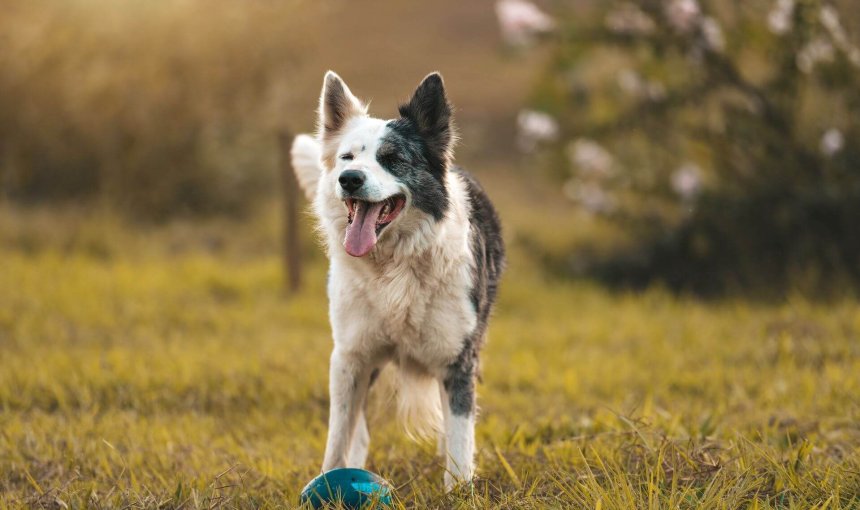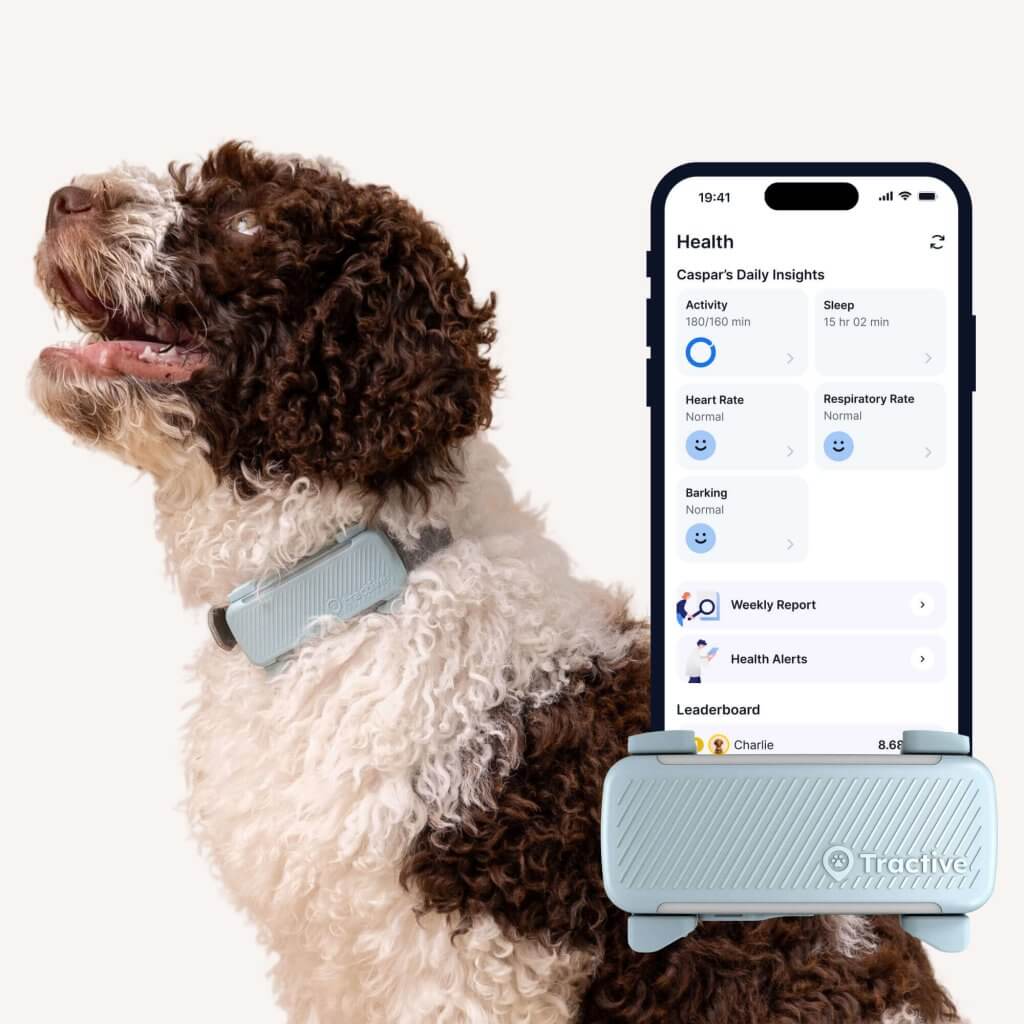The Danger Of Snail Bait For Dogs
You might have set out snail bait in your garden - but if eaten by your dog, it can be deadly. Here's how you can keep them safe.

There are many poisonous items in your home that your dog should not eat. But other toxins, like snail bait, may lurk in your flower beds and garden shed. Many gardeners set out snail bait to rid their gardens of snails and slugs. But if eaten by your dog or cat, snail bait can be deadly.

Always know your buddy is healthy & safe
Read more- What is snail bait?
- Could snail bait hurt my dog?
- Why is snail bait toxic to dogs?
- How much snail bait is dangerous for your dog to ingest?
- What are the symptoms of snail bait poisoning in dogs?
- Treatment for snail bait poisoning in dogs
- Is there a dog-safe snail bait?
- Are there any other alternatives to kill snails?
- What should I do if I think my dog has ingested snail bait?
- Keep your buddy safe – don’t apply toxins when you have a dog!
What is snail bait?
Snails and slugs damage flower and vegetable plants by creating irregularly-shaped holes as they nibble on leaves. This damage is unsightly, but it won’t kill the plants. Some gardeners use snail baits to kill snails and slugs in the garden. Snail bait usually comes in pellet form, but it may also be applied as granules or liquid.
Could snail bait hurt my dog?
Yes, snail bait is toxic to your dog if ingested. The pelleted form of snail bait often contains molasses, apples, and bran to attract the snails and slugs. Unfortunately, these ingredients attract your pets, too. The pellets may remind your pup of kibble, making this deadly toxin even more appealing to your dog.
Why is snail bait toxic to dogs?
Snail baits contain an active ingredient called metaldehyde, a pesticide that kills snails but is poisonous to dogs, cats, and other animals. Metaldehyde can cause neurological damage in dogs, as well as abdominal pain, seizures, and muscle tremors.
If your dog freely explores your yard, they could be drawn to eating snail bait because of the apples, bran, and molasses added to the product. If your pup walks on areas that have been sprinkled with snail bait granules or liquid, some of the toxins could stick to their feet. Else, if the snail bait is later licked off the feet, your dog could be poisoned by the snail bait.
How much snail bait is dangerous for your dog to ingest?
The amount of snail bait needed to harm your dog depends on the size of your dog and the bait toxicity level. Generally, just one teaspoon of snail bait for every 10 pounds of body weight can cause serious harm. For example, if your 60-pound dog eats about 1/8 cup of snail bait, they may experience the symptoms of metaldehyde poisoning.
What are the symptoms of snail bait poisoning in dogs?
Snail bait is a pesticide, which means it is designed to kill animal pests (as opposed to herbicides, which are designed to kill plants).
The toxicity of snail bait comes from metaldehyde, which is a neurotoxin. If ingested, snail bait disrupts the nervous system.
Symptoms of metaldehyde poisoning can appear in as little as 30 minutes after your dog eats snail bait, or they may not appear for 3-5 hours. These include:
- Increased heart rate
- Twitching, tremors, or seizures
- Vomiting
- Increased breathing rate or excessive panting
- Hypersalivation, drooling
- Failure of blood to clot
- Anxiousness
- Restlessness
- Increased body temperature
- Stiff gait or posture
- Severe arching of the back and neck
- Dilated pupils
- Temporary blindness
If treatment is not administered quickly, the toxin can cause liver failure, bleeding, and death.

Get health alerts for your dog
Our pups can’t always tell us if something’s wrong. But if their tracker detects unusual changes in their routine, you’ll get an alert, helping you catch potential issues early.
Treatment for snail bait poisoning in dogs
If you suspect that your dog has eaten snail or slug bait, take them to the veterinarian’s office or emergency animal clinic immediately. Don’t wait for symptoms to start. Your veterinarian can immediately begin treatment to remove the metaldehyde toxin from your dog’s digestive tract by:
- Making your dog throw up.
Your vet will induce vomiting to remove as much of toxin as possible from your dog’s stomach. If the snail bait has not passed into the intestines, vomiting may get the majority of the toxin out of your pup’s system. - Using activated charcoal.
After your dog vomits, the veterinarian may deliver a dose of activated charcoal to absorb any remaining toxin in the stomach. If your dog is already showing symptoms such as tremors or seizures, they may need to be placed under anesthesia to stop the seizures. - Administering IV fluids.
These help stabilize your dog’s body temperature, manage electrolyte levels, and flush out the poison.
Once your dog is stabilized, the veterinarian may take blood and urine samples to watch for liver failure, monitor other organ functions, and track the clotting factor in your dog’s blood. Liver failure can develop up to three weeks following snail bait poisoning, so you may be visiting the vet clinic several times to monitor liver enzymes.
Is there a dog-safe snail bait?
If you have a dog and must control snails in your garden, do not use snail bait made with metaldehyde. Some commercial snail baits contain iron phosphate instead of metaldehyde, and these products claim they are not harmful to dogs. If you purchase any commercial snail or slug bait, always read the product label and precautionary statements. Always keep pets away from sites where pesticides and snail bait have been applied.
Are there any other alternatives to kill snails?
An alternative method of controlling pests is to simply hand-pick snails and slugs from plants, place them in a jar, and sprinkle them with salt to desiccate them. Remove weeds and clean up leaves, stems, and plant debris where snails and slugs are likely to live.
Many gardeners have success with yeast, honey, or beer traps or by placing copper or sandpaper barriers around sensitive plants to keep snails away. Sprinkling diatomaceous earth at the base of plants can also repel snails and slugs. Vinegar and coffee grounds are natural snail repellants that gardeners swear by.
What should I do if I think my dog has ingested snail bait?
If you think your dog has eaten snail bait, take them to the veterinarian immediately. Try to remain calm. If possible, bring the package of snail bait with you so the veterinarian can see the active ingredients. It may be helpful to bring a sample of the dog’s vomit if they have already vomited.
Keep your buddy safe – don’t apply toxins when you have a dog!
The best way to prevent accidental snail bait poisoning is to keep this product out of your home or yard in the first place. This will reduce the chance of your dog eating something they shouldn’t. When possible, try natural products or physically remove pests from your garden. Happy gardening!



